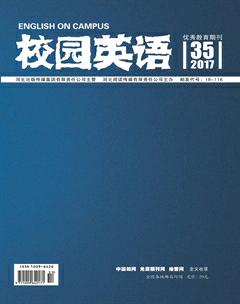An Empirical Study on Teacher Questions
Shenglan+Wang
【Abstract】As a kind of important input, teacher questions play a significant role in classroom teaching. This study used qualitative research approach to figure out the specific functions of display and referential questions in real teaching context.
【Key words】display questions; referential questions; functions
1. Literature Review
1.1 The Definition and Types of Teacher Questions
According to the Longman Dictionary of English Language, it defines teacher questions as a command or interrogative expression used to elicit information or a response, or to test knowledge. Generally, there are three categories:1) open and closed questions;2) display and referential questions;and 3) yes/no questions. For display questions, the teacher already knows the answers. They are asked in order to check if the students know the answers;for referential questions, the teacher does not know the answers and the students answer the questions in order to give the teacher information (Tsui, 1995).
1.2 Functions of Teacher Questions
Teacher questions serve different functions in English teaching. They can check learners understanding and elicit information (Nunan & Lamb 1996);keep learners involved during lessons and help teachers evaluate their learners learning and revise their lessons when necessary (Morgan & Saxton, 1991, cited in Brualdi, 1998).
There are abundant literature about theoretical studies on teacher questions. However, in terms of display and referential questions, there lacks detailed information about their specific functions in real teaching context.
2. The Study
The researcher used qualitative research approach to conduct a case study and collected data through collecting classroom questions during a lesson. The participants are an experienced senior English teacher Lucy and her 22 high school students at grade 2 in a foreign language school specified in English teaching and students relatively high English proficiency.
3. Results
The researcher categorized the data into two types:display questions and referential questions. In total, there are 16 display questions accounting for 69.6% and 7 referential questions taking up 30.4%, among which display questions are generally used to ask for answers the teacher already knows, elicit particular structures or vocabulary items, consolidate students basic knowledge, check students understanding of the sentence or text and allow students to display knowledge acquired within the classroom context. For example, questions like “Do you agree with me?(I find Lily a sweet girl.)”, “Do you have other words to describe her?” are used in a meaningful way to elicit and consolidate the grammar structure of “find sth...”.endprint
Referential questions, related to students life experience and feelings, are used to arouse students interest and curiosity, encourage students active participation, elicit them to produce communicative responses and promoting interaction resembling a non-classroom setting. For example, when Lucy wanted to elicit the topic “One Mans Meat Is Another Mans Poison”, she created a context by raising a question—“What is your favorite food?” There are also referential questions requiring students to think deeply first and then express the facts and their opinions, like “Do you think all food can be eaten in China?What cannot be eaten?”. These questions can get students involved emotionally and care about the food security. As illustrated, referential questions can not only shorten the distance between the teacher and students, but also elicit students to use the target language and enhance their problem-solving abilities.
4. Conclusion
Through analyzing these questions, it is found that display questions are more purposeful and specific in order to introduce or consolidate language points while referential questions are more communicative, intending to elicit students to communicate and interact with the teacher. English teachers should distinguish different teacher questions in real use and make full use of them to improve teaching effectiveness and efficiency.
References:
[1]Brualdi,A.Classroom Questions[J].Washington,DC:ERIC,1998.
[2]Nunan,D.,&Lamb,C.The Self-Directed Teacher[M].Cambridge: Cambridge University Press,1996.
[3]Tsui,A.Introducing classroom interaction[M].London:Penguin English,1995.
Author: Shenglan Wang (1994); female; Bazhong, Sichuan Province; Master candidate; Central China Normal University; Research interest: Foreign Language Teachingendprint

